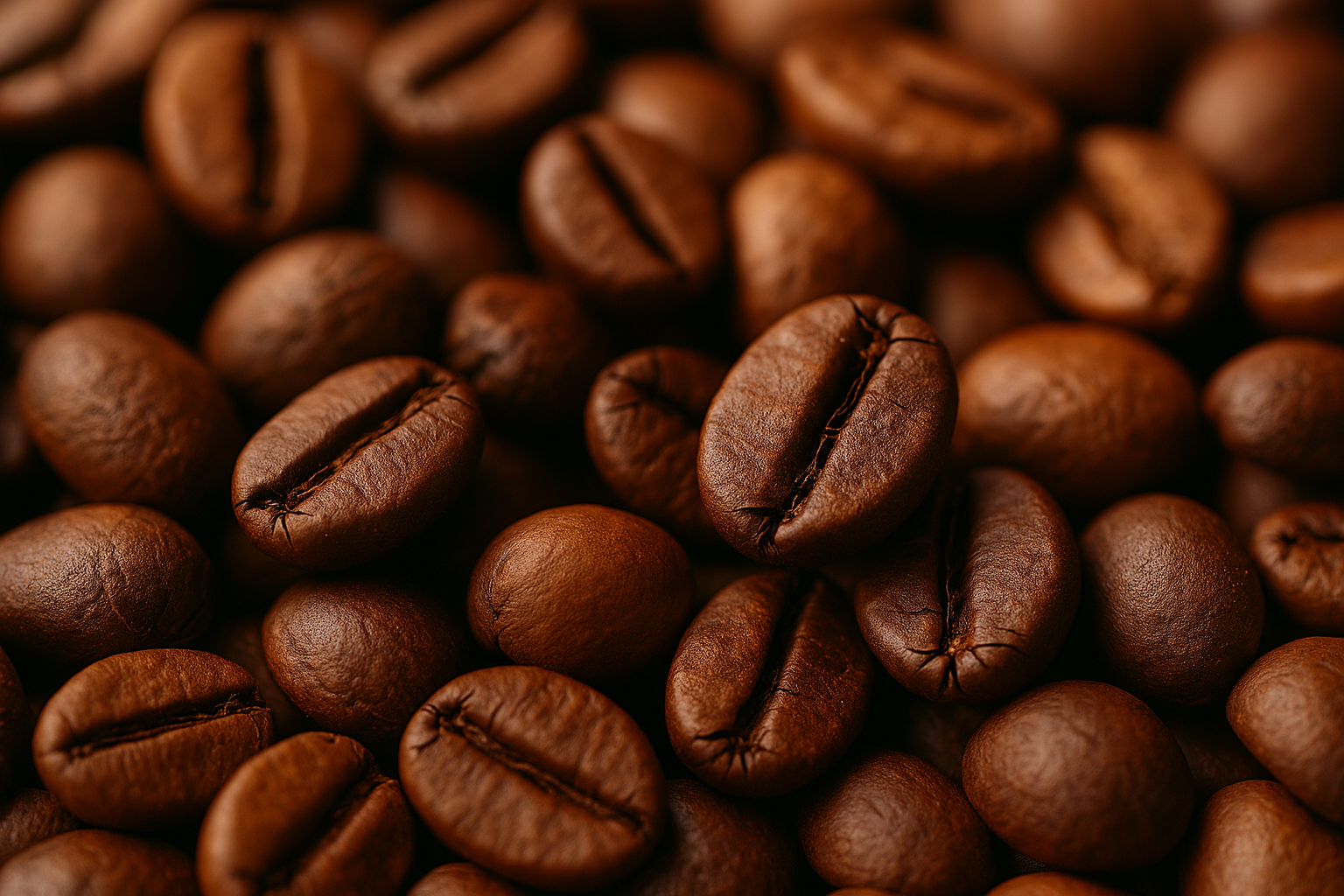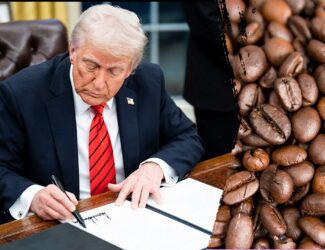
Цены на кофе растут из-за засухи в Бразилии и сокращения поставок в США
Дубай, 21 августа 2025 года (Qahwa World) – Цены на кофе продолжили резкий рост на этой неделе, достигнув многомесячных максимумов на фоне засухи в Бразилии, снижения запасов и сокращения поставок на американский рынок после введения пошлин на бразильский кофе. Контракт на арабику (KCU25) с поставкой в сентябре вырос на +4,05 цента (+1,14%), а сентябрьский контракт на робусту (RMU25) прибавил +236 пунктов (+5,35%). Таким образом, арабика достигла максимума за 2,25 месяца, а робуста – за 2,5 месяца. Рост продолжается уже более двух недель подряд, отражая усиливающееся беспокойство трейдеров и обжарщиков.
Главным фактором роста остаётся погода в Бразилии – крупнейшем производителе кофе в мире. По данным Somar Meteorologia, в штате Минас-Жерайс, где сосредоточены основные плантации арабики, не выпало ни капли дождя за неделю, закончившуюся 16 августа. Засушливые условия в разгар сезона сбора урожая стимулировали фонды к активным покупкам фьючерсов. Сухая погода облегчает сбор спелых ягод, однако её продолжение угрожает состоянию деревьев и снижает потенциал урожая следующего года, особенно для арабики, которая более чувствительна к климатическим стрессам.
В то же время Соединённые Штаты, являющиеся одним из крупнейших импортеров, столкнулись с собственными трудностями. После введения 50-процентных пошлин на бразильский кофе американские покупатели стали уклоняться от заключения новых контрактов и пересматривать действующие соглашения, чтобы избежать дополнительных расходов. Некоторые запросили отсрочку поставок, надеясь на смягчение торговых барьеров. С учётом того, что около третьей части зелёного кофе, потребляемого в США, поступает из Бразилии, это решение заметно сократило доступное предложение.
Статистика подтверждает масштабы падения экспорта. Министерство торговли Бразилии сообщило, что в июле поставки не обжаренного кофе снизились на -20,4% по сравнению с прошлым годом – до 161 тыс. тонн. Совет экспортеров кофе Cecafé указал, что экспорт зелёного кофе упал на -28% до 2,4 млн мешков, в том числе поставки арабики сократились на -21%, а робусты – на -49%. В целом, экспорт кофе из Бразилии в июле составил 2,7 млн мешков, а совокупные поставки за январь–июль снизились на -21% до 22,2 млн мешков.
Ситуацию усилило и сокращение биржевых запасов. Запасы арабики, находящиеся под контролем ICE, упали до 726 661 мешка, что стало минимумом за 1,25 года, а затем немного выросли. Запасы робусты снизились до 6 732 лотов, самого низкого уровня за три недели, что значительно ниже недавнего двухлетнего максимума, зафиксированного в июле.
Тем не менее прогресс в сборе урожая в Бразилии стал сдерживающим фактором. Крупнейший кооператив и экспортер страны Cooxupé сообщил, что к 15 августа его члены собрали 86,1% урожая. Консалтинговая компания Safras & Mercado оценила завершённость сбора на национальном уровне в 94% по состоянию на 6 августа, включая 99% робусты и 91% арабики. Это означает наличие достаточных объёмов в краткосрочной перспективе, хотя долгосрочный прогноз по-прежнему осложнён погодными рисками.
На мировом уровне Международная организация кофе (ICO) зафиксировала рост экспорта в июне на +7,3% до 11,69 млн мешков, однако совокупные поставки за октябрь–июнь снизились на -0,2% до 104,14 млн мешков. Во Вьетнаме, крупнейшем производителе робусты, засуха сократила урожай 2023/24 года на -20% до 1,472 млн тонн, что стало минимумом за последние четыре года. Экспорт в 2024 году снизился на -17,1% до 1,35 млн тонн, а Ассоциация кофе и какао Вьетнама пересмотрела прогноз урожая на 2024/25 год до 26,5 млн мешков вместо 28 млн ранее. Несмотря на это, экспорт Вьетнама за январь–июль 2025 года вырос на +6,9% до 1,05 млн тонн, что временно поддержало рынок.
Согласно прогнозу Службы сельского хозяйства за рубежом Министерства сельского хозяйства США (FAS), мировой урожай кофе в 2025/26 году составит 178,68 млн мешков (+2,5% к прошлому году). Производство арабики снизится на -1,7% до 97,02 млн мешков, тогда как робусты увеличится на +7,9% до 81,65 млн мешков. В Бразилии урожай составит 65 млн мешков (+0,5%), а во Вьетнаме достигнет 31 млн мешков (+6,9%), что станет максимумом за четыре года. Конечные мировые запасы вырастут на +4,9% до 22,82 млн мешков. Однако трейдер Volcafe прогнозирует дефицит арабики в размере -8,5 млн мешков в сезоне 2025/26, что шире текущего разрыва в -5,5 млн мешков и станет пятым подряд годом дефицита. Это означает, что цены на кофе вряд ли окажутся под давлением снижения в ближайшее время.






